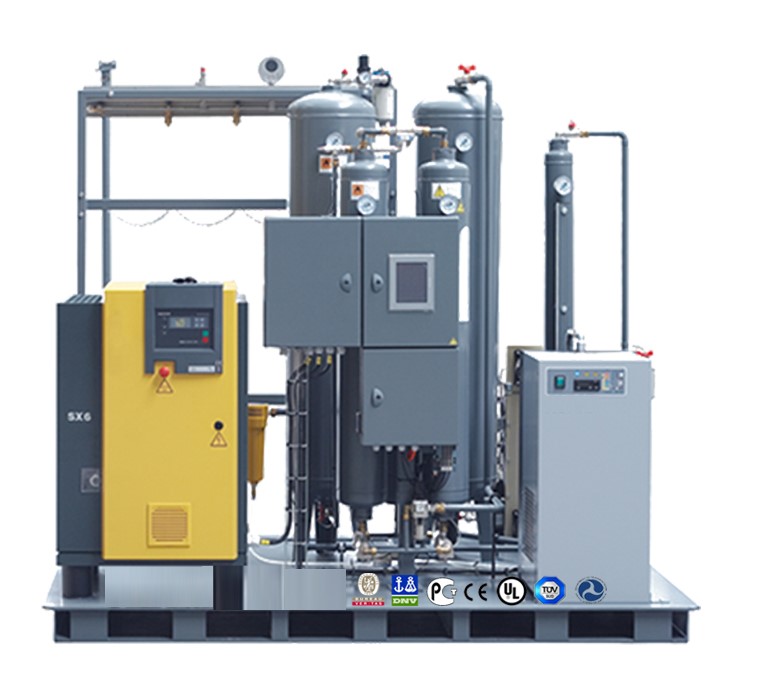Description
The adsorption gas separation process in nitrogen generators is based on the phenomenon of fixing various gas mixture components with a solid substance called an adsorbent. This phenomenon is brought about by the gas and adsorbent molecules’ interaction.
The technology of air-to-nitrogen production with the use of adsorption processes in nitrogen generators is well-studied and widely applied at industrial facilities for the recovery of high-purity nitrogen.
The operating principle of a nitrogen generator utilizing the adsorption technology is based upon the dependence of the adsorption rates featured by various gas mixture components upon pressure and temperature factors. Among nitrogen adsorption plants of various types, pressure swing adsorption (PSA) plants have found the broadest application worldwide.
The system’s design is based on the regulation of gas adsorption and adsorbent regeneration using changing pressures in two adsorber–absorbent–containing vessels. This process requires constant temperature, close to ambient. With this process, nitrogen is produced by the plant at the above-atmospheric pressure, while the adsorbent regeneration is accomplished at below-atmospheric pressure.
The swing adsorption process in each of the two adsorbers consists of two stages running for a few minutes. At the adsorption stage oxygen, H2O and CO2 molecules diffuse into the pore structure of the adsorbent whilst the nitrogen molecules are allowed to travel through the adsorber–adsorbent-containing vessel. At the regeneration stage the adsorbed components are released from the adsorbent vented into the atmosphere. The process is then multiplely repeated.
Advantages
- High nitrogen purity: PSA nitrogen generator plants allow the production of high-purity nitrogen from air, which membrane systems are unable to provide – up to 99.9995% nitrogen. But in most cases, they do not produce more than 98.8% nitrogen with the remainder being argon that is not separated from the nitrogen by the usual PSA process. The argon is not normally a problem, as argon is more inert than nitrogen. This nitrogen purity may also be ensured by cryogenic systems, but they are considerably more complex and justified only by large consumption volumes. The nitrogen generators use CMS (carbon molecular sieve) technology to produce a continuous supply of ultra-high purity nitrogen and are available with internal compressors or without.
- Low operating costs: By substitution of out-of-date air separation plants nitrogen production savings largely exceed 50%. The net cost of nitrogen produced by nitrogen generators is significantly less than the cost of bottled or liquefied nitrogen.
- Environmental impact: Generating nitrogen gas is a sustainable, environmentally friendly, and energy-efficient approach to providing pure, clean, dry nitrogen gas. Compared to the energy needed for a cryogenic air separation plant and the energy needed to transport the liquid nitrogen from the plant to the facility, generated nitrogen consumes less energy and creates far fewer greenhouse gases.


Reviews
There are no reviews yet.